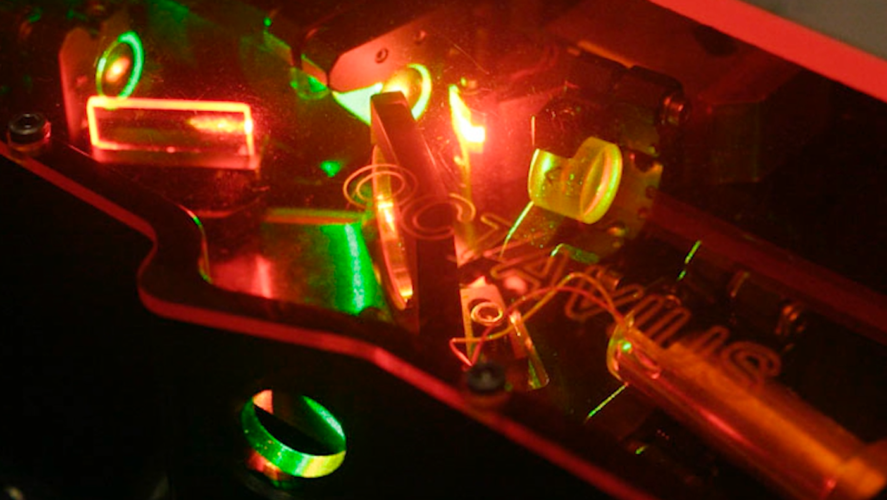
Massachusetts Institute of TechnologyKavli Institute for Astrophysics and Space Research
Exploring the universe with satellites, earth-based observatories and laboratory experiments
The MIT Kavli Institute for Astrophysics and Space Research (MKI) got its start in 1965 as the MIT Center for Space Research and joined the Kavli family in 2004. It engages in a mix of longstanding research activities, such as satellite-based X-ray astronomy, and newer projects including the search for dark matter and the study of distant planets.
Leadership
AREAS OF INQUIRY
- DETECTION OF DARK MATTER: Data from the Big Bang and observation of vast structures such as galaxy clusters indicate that most of the mass in the universe exists in a form that cannot be seen or measured like ordinary matter. MKI scientists are developing new methods to detect this “dark matter,” including a gas-based technology that may show not only the presence of dark-matter particles but the direction that they travel.
- OBSERVING EXTRA-SOLAR PLANETS: MKI is a leader in the study of planets outside our Solar System, one of the booming fields in astronomy. Through TESS (Transiting Exoplanet Survey Satellite), MKI has discovered more than a thousand exoplanets, with more to come.
- STUDYING THE “DARK AGES” OF THE UNIVERSE: MKI is engaged in space- and earth-based projects to study the universe as it was just before the first stars and galaxies appeared. Neutral hydrogen present at the time produced radio waves that are arriving billions of years later on a frequency just above the FM radio band. Kavli researchers are building an array of receivers in Western Australia – far from interfering radio broadcasts – to pick up those signals and observe the universe just before its first light.
- GRAVITATIONAL ASTROPHYSICS: When black holes collide or supernovas collapse, these violent events send out ripples in space-time. These gravity waves are predicted by Einstein’s General Theory of Relativity, but only now are researchers developing tools sensitive enough to detect them. MIT and now MKI have played a key role in building facilities such as LIGO, the Laser Interferometer Gravitational Wave Observatory. With LIGO, Kavli scientists have seen an explosion of new knowledge about the nature of gravity and the dynamics of the cosmos.
The Planet Hunter

Astrophysics
April 18, 2025, marked seven years since NASA's TESS took to the skies.
Jul 18, 2025
Researchers at the Kavli Institute for Astrophysics and Space Research have proposed a way to solve two cosmic mysteries with a single underlying explanation
Feb 21, 2025
Rob Simcoe reflects on the institute’s successes and the exciting new research to come
Jun 06, 2024
Astrophysics Science Spotlights
MIT’s SuperFIRE instrument will enable inquiry into the cosmos, supporting the U.S. Extremely Large Telescope Program
Apr 23, 2024
Astrophysics Profile
Astronomers are seeking to uncover the many cosmos goings-on that transpire quickly in invisible wavebands of light
Oct 03, 2023
More Institutes
At Kavli Institutes around the world, scientists explore the frontiers of science in the fields of astrophysics, nanoscience, neuroscience and theoretical physics.
Nanoscience
Delft University of Technology, Netherlands
Neuroscience
University of California, San Francisco
Astrophysics
Peking University-Beijing
University of Tokyo
Nanoscience
California Institute of Technology
Theoretical Physics
University of California, Santa Barbara
Neuroscience
Norwegian University of Science and Technology
Theoretical Physics
University of Chinese Academy of Sciences
Neuroscience
Johns Hopkins University
Cornell University
Nanoscience
University of California, Berkeley
Nanoscience
University of Oxford
Astrophysics
University of Cambridge
Neuroscience
Rockefeller University
Stanford University
Neuroscience
Columbia University
Neuroscience
University of California, San Diego, and the Salk Institute for Biological Studies
Neuroscience
Yale University
Astrophysics
University of Chicago























